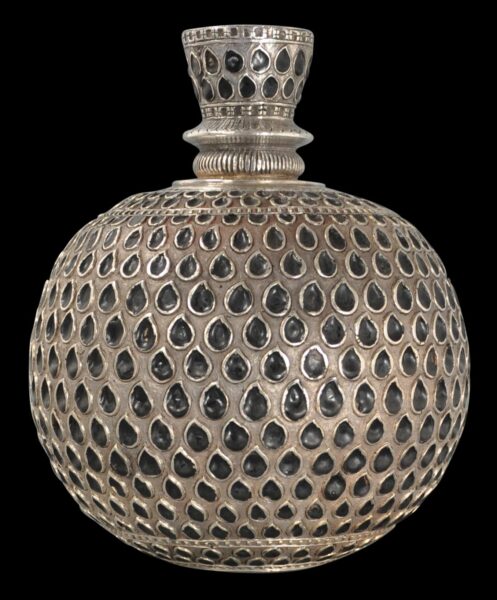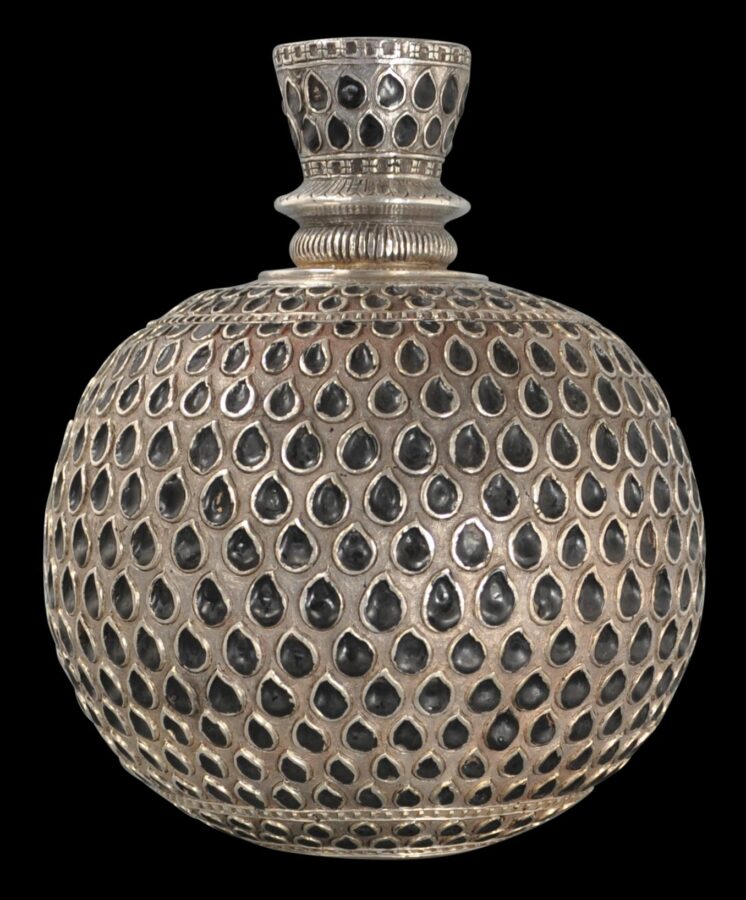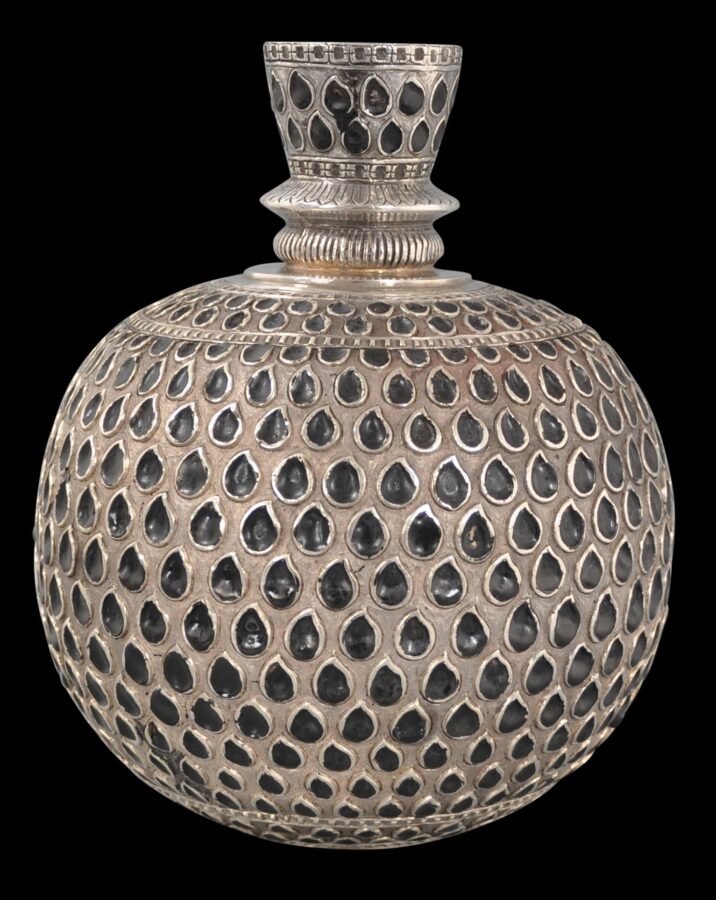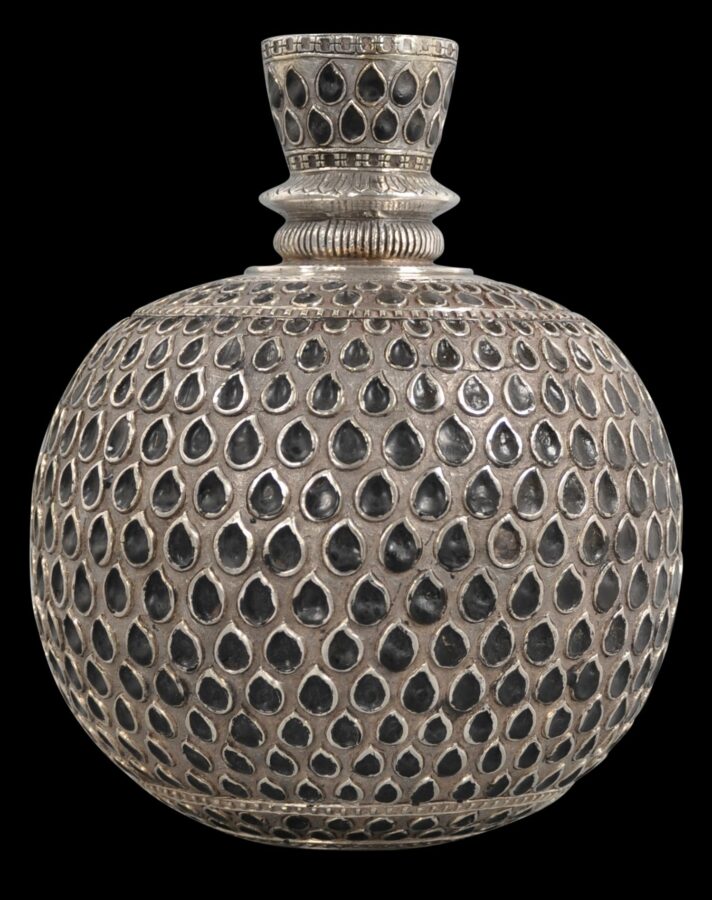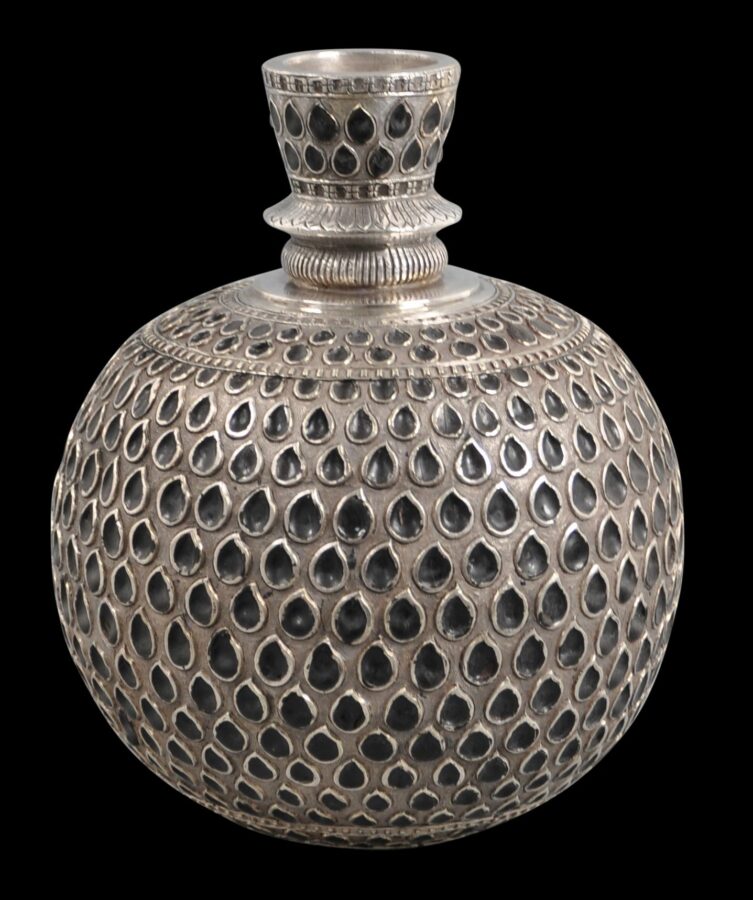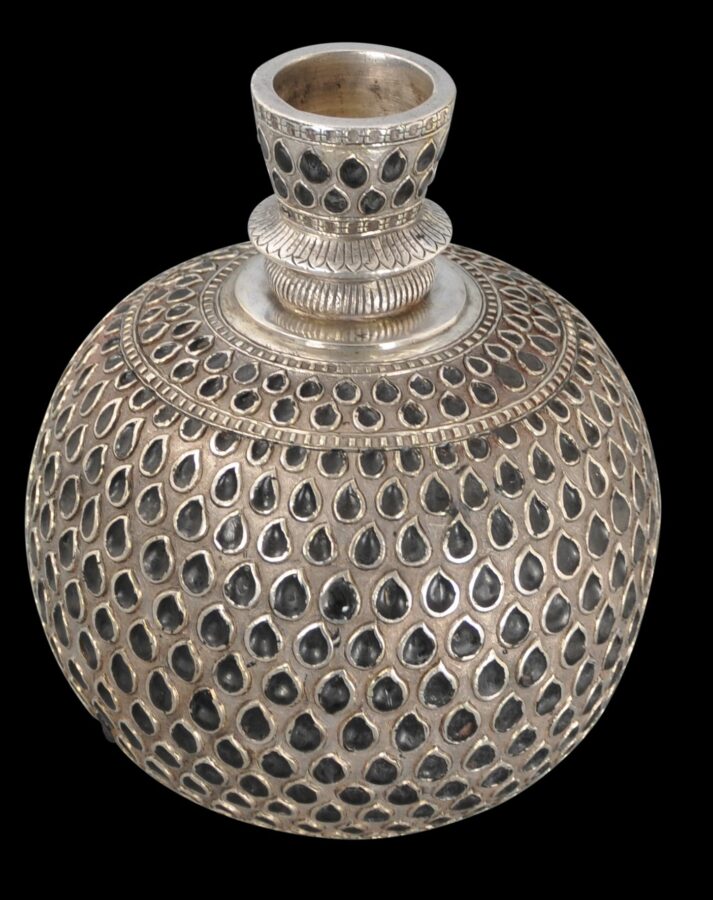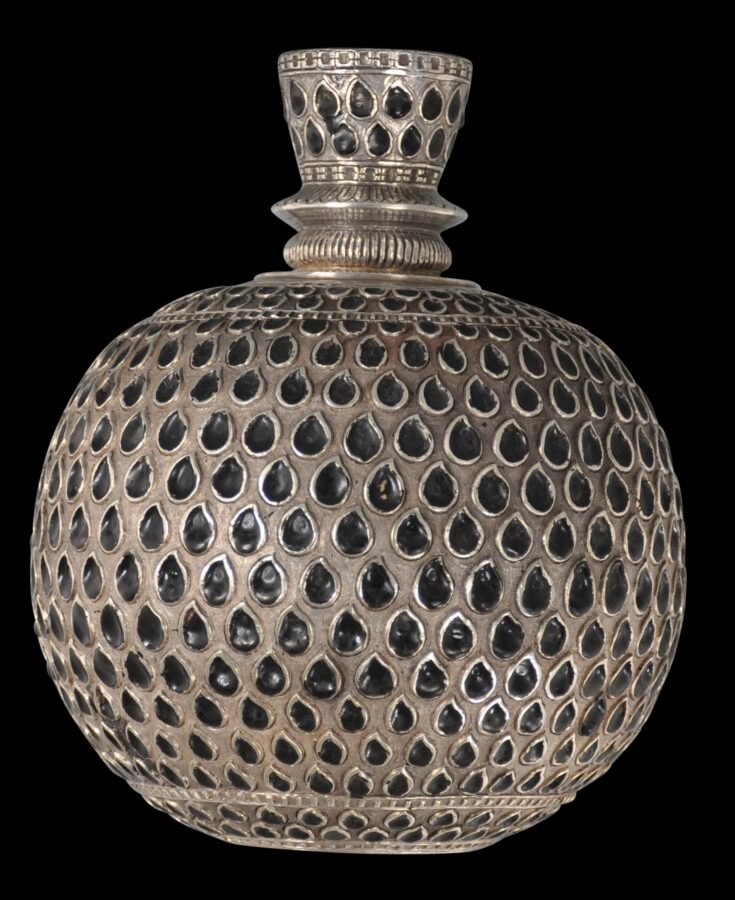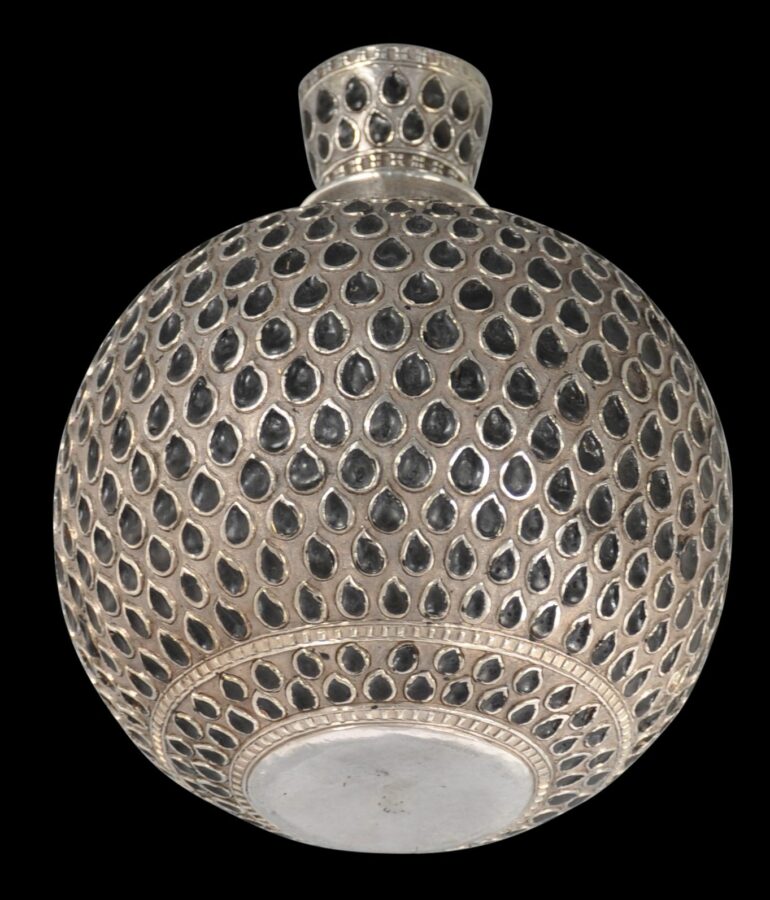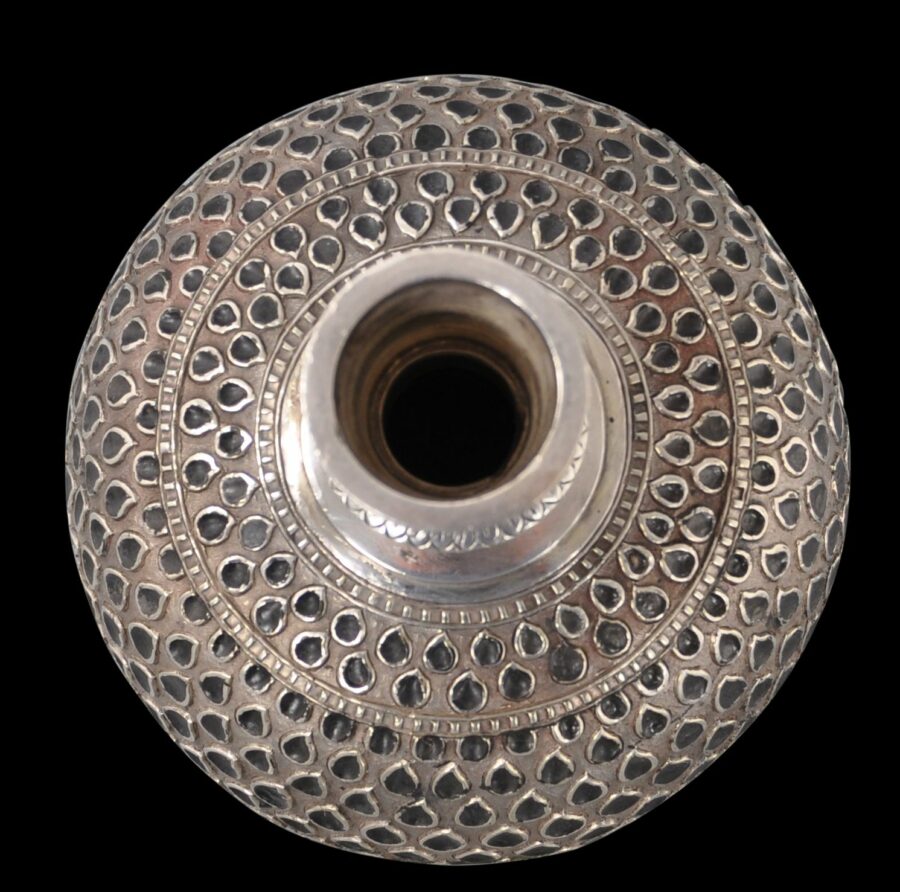This solid silver hookah (huqqa) vase of spherical form is chased with dozens tear-shaped cartouches each of which has been filled with a dark, lac-like substance to provide a contrast with the surrounding silver. This is all against a tooled background. The baluster-form neck has an upper section similarly decorated as well as a ring engraved with lotus petal motifs.
The use of tear-shaped fields to evoke inlaid jewels is often seen in Mughal silver that dates to the 18th century.
It has been made from thickly-walled, high-grade silver. As a consequence, it is heavy in the hand.
The base is flattened so that the vessel can sit evenly and unaided.
The spherical form of hookah base is considered the earliest form in India, with the bell-shaped form becoming more popular from the mid-18th century onwards.
Many spherical related examples are illustrated in Zebrowski (1997).
Hookah bases such as these were filled with water. Pipes were passed through the mouth and users were able to draw tobacco smoke through the water allowing it to be cleansed of ash.
The example here is in fine condition without dents ore repairs.
References
Keene, M., Treasury of the World: Jewelled Arts of India in the Age of the Mughals – The Al-Sabah Collection Kuwait National Museum, Thames & Hudson, 2001.
Zebrowski, M., Gold, Silver & Bronze From Mughal India, Alexandria Press, 1997.


